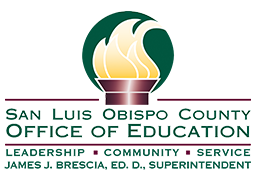Impacting Student Outcomes Throughout Our County
Education in California has been going through many changes and shifts in the past few years. Often we hear folks state that it feels like too much or too fast, though most readily agree that it is great for students. Change or transitions are a normal part of improving our systems to benefit students. The more difficult component to address in change is the impact and effectiveness of what we are doing. In reflecting on this, I asked some of our leaders to give me some of the statistics on who we are impacting. Below are some of the numbers from our SLOCOE programs:
- The Induction program had 26 administrators and 167 teachers enrolled and clearing their credentials. Providing ongoing support for these induction candidates, 17 administrative coaches and 98 mentor teachers were critical in their success.
- State/First 5 Preschools served almost 200 students in 8 high-quality centers.
- The Raising a Reader program put books in the hands of over 723 preschoolers in classrooms, childcare providers, libraries, etc.
- Professional development geared towards early learning providers saw 367 participants attending evening classes along with another 146 that were trained at their sites.
- Outdoor education programs provided opportunities for over 7,000 students, parents, and teachers to experience and learn about their environment through day excursions, residential programs, and SOAK Camp.

If you look at your district’s growth trajectory in the last year, what might have felt overwhelming or a daunting change may now be part of your everyday language and administrative or teaching repertoire. Each district is moving forward in impacting outcomes for students through various avenues. One key area is supporting the craftsmanship and efficacy of teachers.
- PRJUSD provided 105 math teachers in grades 3-12 two full days of collaborative training on high effect math instructional practices in addition to the five days of PD all teachers received.
- Through their early release model, AUSD used their Instructional Leadership Team to build capacity through regular PD at the sites in collaboration with principals. Their current focus on Thinking Maps has shown a huge impact on thinking and writing for students, and is even used at district and board meetings.
- Through a multi-year implementation of Thinking Maps, LMUSD has reached all students TK-12th grade. They provided site-based support to TK-8th grade teachers and have trained new teachers on how to use this tool for organizing their thinking and establishing a common “thinking” language. After implementing Thinking Maps, the percentage of K-3 students performing at or above grade level on benchmark reading assessments grew from 66% to 76%.
These are just three great examples from our districts. As I consider our programs, I can see who we impact and know that research supports these efforts. Our challenge, as we have a greater ability to define our own pathway forward in addressing educational changes, is to be mindful and purposeful in delivering impactful outcomes. At times we can try to tackle too much, too quickly, and dilute the outcomes we expected. Defining needs through data, intentionally implementing actions and services to address them, and thoughtfully measuring effectiveness, is crucial to maintaining sustainable, positive benefits to students.
Dan Peverini
Executive Director
Educational Support Services
dpeverini@slocoe.org
805-782-7267
Contact
- San Luis Obispo County Office of Education
- Office of James J. Brescia, Ed.D.
- 3350 Education Drive
- San Luis Obispo, CA 93405
- Tel: 805-543-7732
- Contact SLOCOE
- Contact Webmaster

